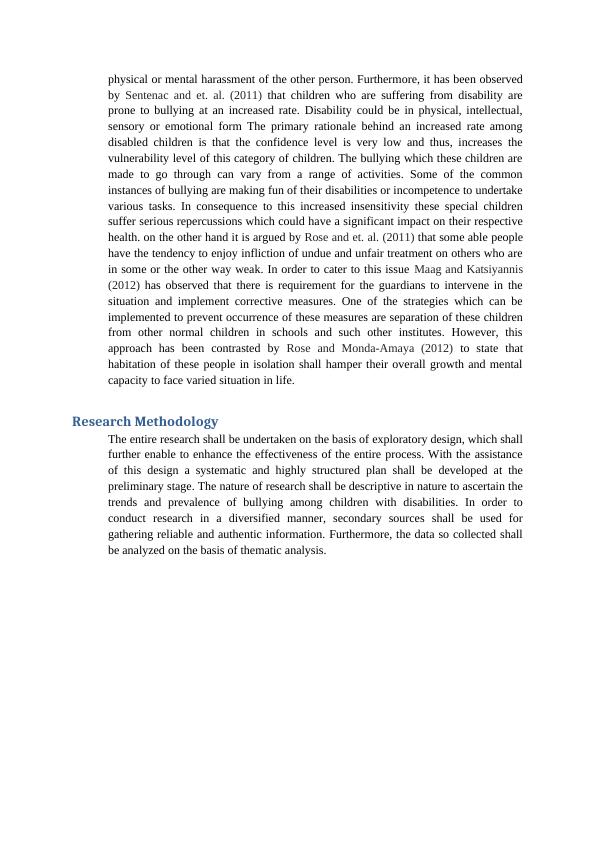Bullying Prevention and Intervention Strategies for Children with Disabilities
4 Pages1100 Words485 Views
Added on 2023-04-04
About This Document
This research project aims to examine the prevalence of bullying among children with disabilities and identify effective prevention and intervention strategies. It explores the impact of bullying on learning ability and assesses the risks and practice factors. The research will be conducted through an exploratory design and analyzed using thematic analysis. The objective is to understand the special needs of children with disabilities and ascertain measures for prevention and intervention.
Bullying Prevention and Intervention Strategies for Children with Disabilities
Added on 2023-04-04
ShareRelated Documents
End of preview
Want to access all the pages? Upload your documents or become a member.
Bullying prevention and intervention strategies for children with disabilities: Assessing its prevalence and identifying risk and practice factors
|24
|7661
|301
Disability Awareness: Learning Disability and Physical Disability
|8
|1726
|303
Introduction To Human Development
|10
|2750
|29
Intellectual Disability in Australia
|5
|1211
|17
Measuring Health
|11
|3223
|458
Disability and Children with Mental Health - Issues, Impact, and Policies
|6
|1562
|491


